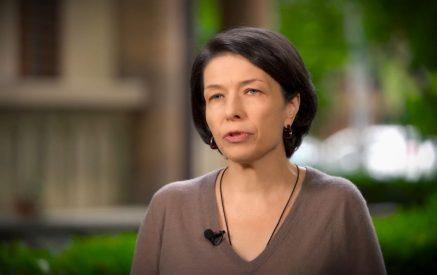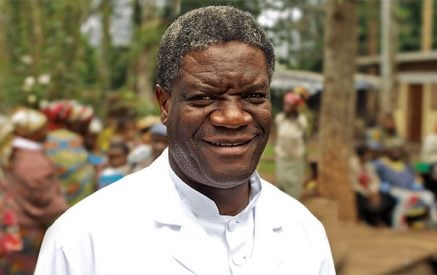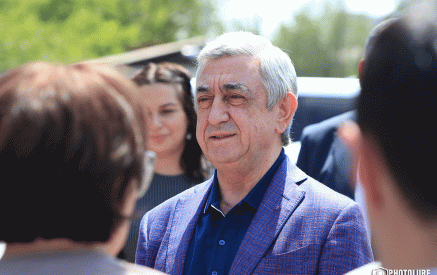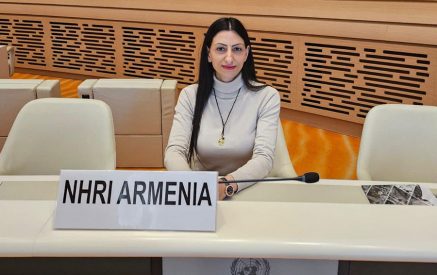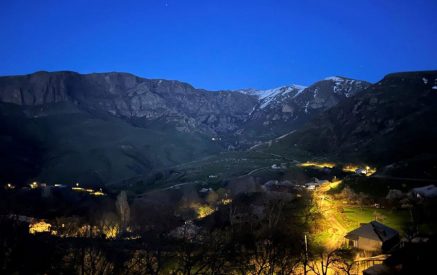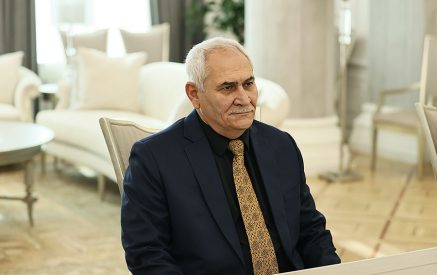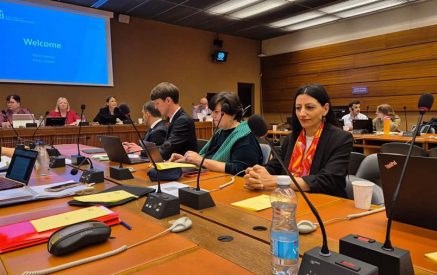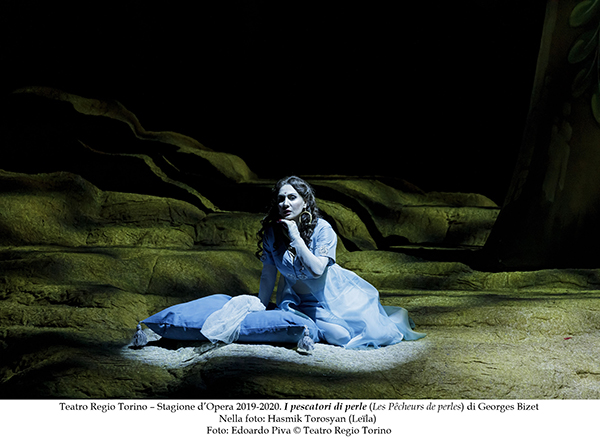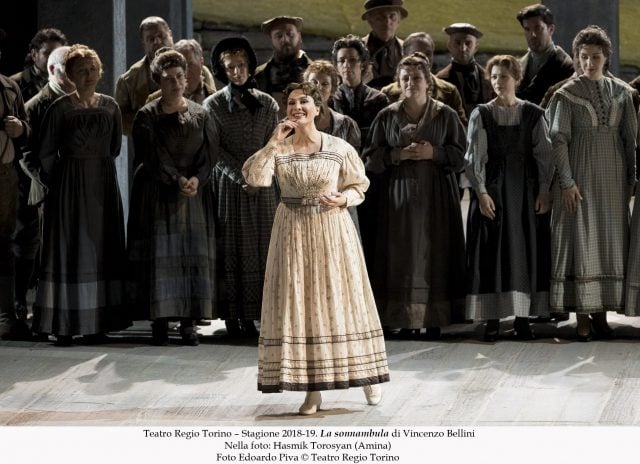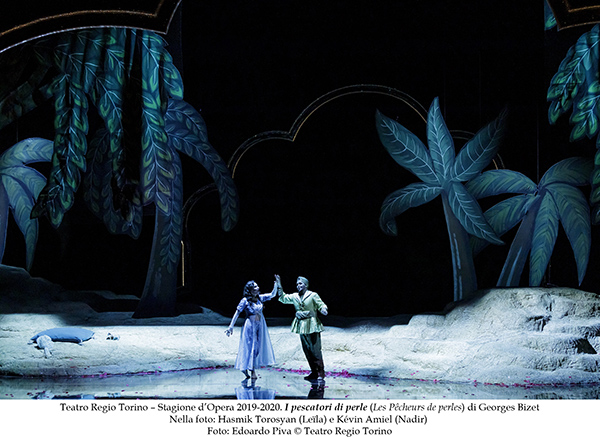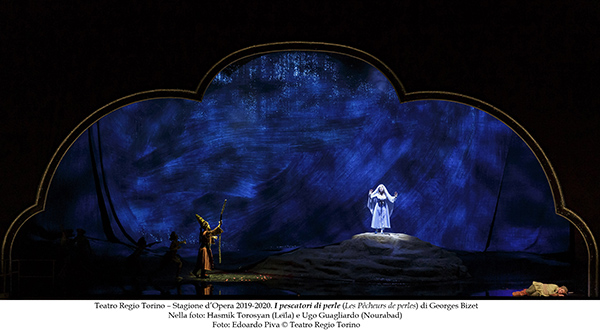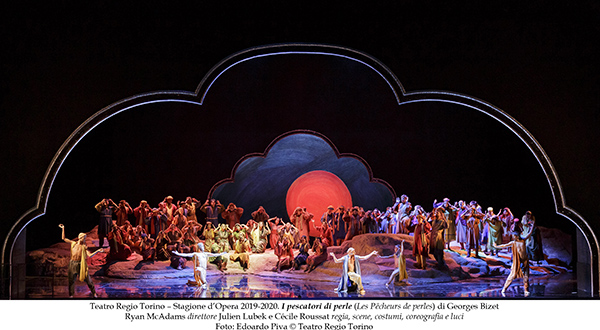By Fernando Peregrín Gutiérrez
(October 3, 2019
It is not easy to allegorically stage, with an orientalist flavour, an opera of the nineteenth-century French exotic style for the public of the 21st century, given the globalization of information on all places and cultures. Therefore, it is not uncommon to be updated the plot or for the orientalist elements to be reduced to the merely schematic, to create an atmosphere that simulates what could have ben the “mise-en-scène” of these works in the Paris of the second half of the 19th century This last option has been the one chosen by Julien Lubek and Cécile Roussat, responsible for the production, sets, choreography, costumes and lighting.
First of all, and despite its scarce spectacularity necessary to reflect the exotic orientalism that Bizet wanted to give to this composition, it should be noted that those responsible for the staging have sensibly respected the action as it was conceived by the composer and his two librettists, something, on the other hand, uncommon today. The stage is framed with one wavy arches that recall the edge of a cotton cloud, and that significantly reduces the height of the scene at the ends of its downstage. The sea is suggested by a small fragment of the floor with a metallic surface, in the foreground of the stage. The elements that require the setting of the plot – desolate and sandy beach, palm trees, Brahma temple, “Leïla” small boat, great flame of fire of a bonfire, the reddish luminosity that illuminates the background of the scene and makes the Hindus believe that their huts and their fields are burning — they are resolved schematically, with simplicity typical of the scenographies — although without their luxury and splendor — of the time when the work was premiered and with a certain naive touch in the vegetation.
Read also
The acting aspect was quite conventional and somewhat neglected. Mass movements in the last scene, confusing and of little dramatic effect, unconvincing. The physical interrelationships between the main characters hardly contributed anything to the tragic or pathetic development of the plot.
The costumes are more successful, with pastel and earthy tones, than the choreography, entrusted to half a dozen dancers whose modern-style dance had little to do with the orientalist environment that should be assumed of the ancient Ceylon. The lighting, which plays an important role, rich in colors and contrasts, was better conceived than realized, as there were some failures, not very important, but evident.
The cast, unique for the five functions with which the 2019/2020 season of the Regio di Torino was opened, was uneven. By far, the best of the night was in the song and in the presence of the young soprano Hasmik Torosyan, whose figure and very beautiful facial features agree splendidly with the “priestess Leïla”. Except for a somewhat insecure beginning, she progressed extremely as the plot went by, until extraordinary inflections and vocal colors full of emotions were achieved, in its long duet with “Zurga”. Before, she showed the quality of her vocal metal, with velvety fleshy moments, almost absolute homogeneity throughout her whole register and natural ease – which relies on a very skilled and refined technique — on the high notes and agility in the aria with chorus “O Dieu Brahma! ”, –in which she was her best moment—, the recitative and cavatina“ Comme autrefois dans la nuit ”(of very tight and high-pitched tessitura), with sweet and elegant singing line, and sincere expression of abandonment in the arms of his beloved “Nadir” . This Armenian soprano is in her element playing roles of young girls tenderly and passionately in love, such as “Marie” (Fille du régimnet), “Amina” (Sonnambula) and now “Leïla”, whose fragility and resignation in adverse moments she is capable of express with an emotion and sweetness that easily reaches the audience. To all this must be added that her accent and articulation of French language is better every day and that the emission and projection of his voice is very prominent.
In the role of “Zurga” was planned to intervene the Italian baritone Fabio Maria Capitanucci. Instead, and without announcing it at the beginning of the performance, it was performed by the Belgian baritone Pierre Doyen, who has only recently begun incorporating leading roles into his repertoire. It was a pleasant surprise. The vocal raw material is excellent and its pronunciation and articulation of French, his vernacular language, impeccable (very clear and distinct between the characteristic French nasal vocals and the clear difference in sound between “o” and “ô” [interjection]). His line of singing is already quite refined and his conception of the character opts more for the vocal colors that express a tormented and resigned being, rather than irascible and a slave of passion.
Les pêcheur de perles is an opera to show off a good lirico-leggero tenor. Unfortunately, Frenchman Kévin Amiel mediocrely embodied the fisherman “Nadir.” The voice is clear, not devoid of beauty, sufficiently voluminous, but the efforts to be made in the passagio della voce to a limited high register, short of fiato (breath), with a tendency to deflate and emission engolata (gargle) and little in maschera (face, head) are very noticeable. He was very eclipsed in the duo of friendship with “Zurga” and in the love duetto with “Leïla” by both Piere Doyen and above all, by Hasmik Torosyan. His extraordinary aria “Je crois entendre encore” went very unnoticed. Curiously, and despite being a French native, his articulation of the text is quite flawed and the fearsome nasal vowels — for non-Francophone tenors — were to nasalized.
Correct and acceptable, in general, the bass Ugo Guagliardo as “Nourabad”, with two or three excellent noble and authoritative phrases at the appropriate times.
The version chosen was the original of 1863. It was directed with great attention to detail by the Maestro Ryan McAdams, who always controlled the volume of the orchestra so that the voices – especially the magnificent pianissimi and filati of Hasmik Torosyan – could be heard with great sharpness. He highlighted the accompaniment, delicate and of great sound refinement of the woods and the winds, of the tenor at the already commented aria “Je crois entendre encore”. He achieved a sound of rich colors in the string section, despite the low loudness of the double basses.
In the choir of the Teatro Regio the ladies stood out, with powerful, clear and beautiful sound of the soprano and mezzosoprano. As usual in many choirs of Italian opera houses, bass-singers are lacking, replaced by baritones with serious but not very loud and emphatic notes.





